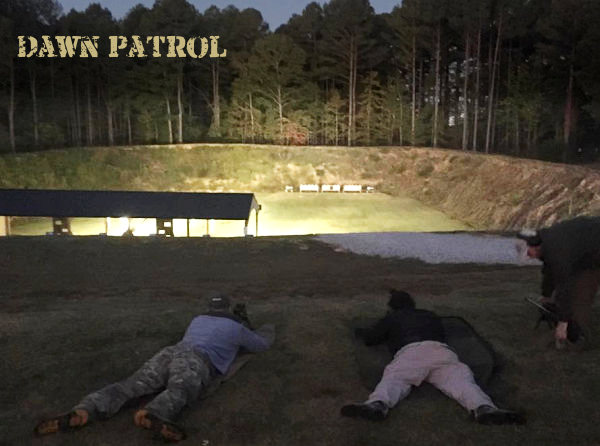PRS Tactical and Vintage Sniper Matches on Shooting USA TV


GAP Grind PRS Competition and Vintage Sniper Rifle at Talladega — that’s what you get in a double-feature episode of Shooting USA TV, now available on YouTube. This is a killer episode, with great coverage of two rapidly-growing shooting sports. The GAP Grind is the biggest PRS tactical match of the year, while Vintage Sniper Rifle matches have proven popular with competitors of all ages, from 18 to 80. Learn all about these shooting disciplines in this 48-minute Shooting USA production. Photos, unless otherwise indicated, come from Ramia Whitecotton’s GAP GRIND 2016 photo album
PRS Competition — the GAP Grind
This Shooting USA episode features the Bushnell GAP Grind Pro-Am, a tough tactical/practical match in Tennessee with 300 competitors. Conducted in association with the Precision Rifle Series (PRS), the GAP Grind features a Pro/Am format — new shooters partner with an experienced shooters for the two-day, 25-stage event. This year John Scoutten teamed up with novice shooter Jen Hodson.
Yes this video includes the GAP Grind PRS match. Click the arrow and it should begin with the PRS segment, 28 minutes into the episode:
One stage required the use of “human support” by one’s team-mate. Here Shooting USA’s John Scoutten provides a strong shoulder for female competitor Jen Hodson.

Lots of Action, with 20+ Stages
The GAP Grind is a notoriously challenging, “high tempo” match with minimal down-time between stages. Over the course of 20+ stages, competitors will fire 200+ shots at a variety of steel, paper, moving, and reactive targets out to 1,200 yards. Targets vary in size/difficulty based on the shooter’s position, distance, and time allotted. Most stages include “stressors” — i.e. time limits or required movement(s).

On the first day of the Bushnell GAP Grind, teams are scored together. On the second day team members still work together but scores are logged individually. This is a difficult event with awkward positions, barriers, and other challenges. Targets vary in size, shape, and distance. One of the toughest targets is the 500-Yard Mover. And the shooting platform (below) offered a double-decker challenge…

Here’s a “Dawn Patrol” shot from Bryan Sikes. He mastered this stage: “6:00 am cold bore — nailed it!”

Vintage Sniper Rifle Competition at Talladega

In this episode, Shooting USA features the Vintage Sniper Match at the CMP’s Talladega Marksmanship Park. This is a popular two-man team event, for shooter and spotter, using military rifles in service up to 1953. One added challenge is the time limit. The team has only 20 seconds to complete each shot — That’s 20 seconds for the spotter to read the conditions, and for the shooter to pull the trigger.

File photo from Vintage Sniper match at Camp Perry. At Talladega, there are video target monitors at each shooting station.
 Guns of Grandfathers…
Guns of Grandfathers…
In this episode two USAMU marksmen, SGTs Daniel Crody and Robert Shoup, compete with an Springfield M 1903 A4 reproduction topped with a vintage optic. “For me it holds a little bit of sentimental value,” says SGT Crody. “I did have two grandfathers in World War II. It is definitely a pleasure holding a piece of history… and to be able to see and feel what these guys had as far as tools to operate with.”
“It’s a match that brings a different type of competitor out. It brings a nostalgic competitor out. You’ll see World War II time-period rifles, sniper-type rifles that were used during World War II, Korean War era,” says the CMP’s Chief Executive Officer, Mark Johnson. “The optics are either original optics or current reproduction of old optics.”






















